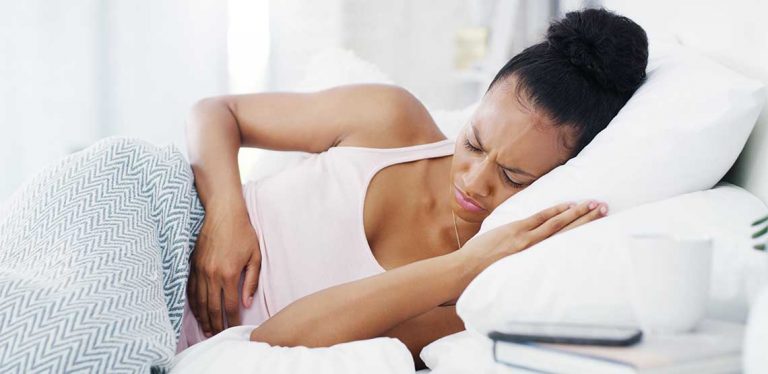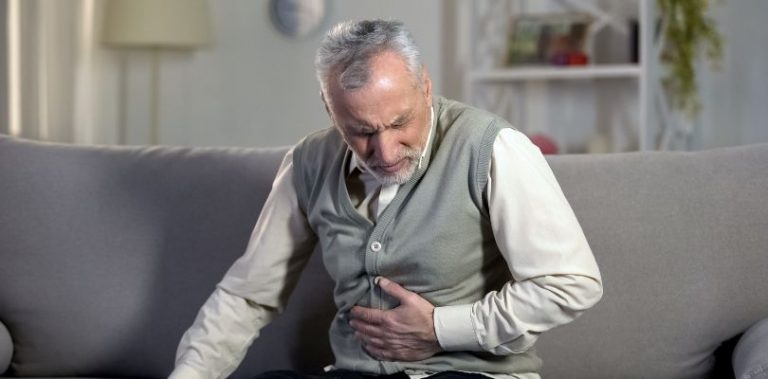What Does Endometriosis Feel Like?
Endometriosis is a painful condition where uterine tissue grows on the outside of the uterus. Many women report painful periods, irregular and excessive bleeding, and painful intercourse, as common symptoms.
Sure, we have all experienced at least a little bit of bodily discomfort during our period as women. It's one of the reasons why many of us hate the days as they draw near. But, for someone with endometriosis, periods bring more than discomfort; it brings dread of what will happen once it starts.
From the moment puberty hits, our bodies go through many changes that push girls from childhood into womanhood. Unfortunately for some, something takes a wrong turn, resulting in endometriosis. And that brings up a lot more pain and suffering than what many women go through.
What You Should Know About Endometriosis
Endometriosis is, regrettably, a common condition among women. According to the U.S. Department of Health & Human Services, endometriosis affects more than 11% of American women. It's not difficult to imagine how many people with uteruses worldwide are suffering alongside.
Endometriosis is a condition in which a tissue, similar to the tissue that should typically line the inside of the womb or uterus, lines the outside of the body's uterus and other organs. This covering sometimes extends to the ovaries, tissues holding the uterus in place, and the outside of the uterus. It also covers the fallopian tubes, the bowel, bladder, cervix, rectum, vagina, and vulva.
In some rare conditions, endometriosis develops in other parts of the body, like the brain, the lungs, and the skin.
What Causes Endometriosis?
Research is ongoing. But as of yet, there is no definitive cause for this disease.
However, some factors found in common amongst patients include:
- Genetics: Endometriosis runs in families, so there may be a genetic link to the condition.
- Problems with the menstrual flow: Women may experience retrograde menstrual flow, which, paired with the tissue shedding, could cause the blood to flow “back” through the fallopian tubes into other parts of the body.
- Hormones: Estrogen exacerbates the effects of endometriosis.
- Problems with the immune system: A weak immune system may fail to repair the endometrial tissue shedding from the organs' exterior layer, thus causing further disorders.
- Surgery: A surgery conducted in the abdominal area, such as a hysterectomy or a C-section (Cesarean), may have also caused the endometrial tissue to move to an external area by mistake, driving the growth to occur there.
What Problems Does Endometriosis Cause?
All problems related to endometriosis are centered on the womb and the uterus, with the main issue being your menstrual period and cycle.
Every month, the lining which should shed from within your womb sheds from the outside layers. That causes immense pain, swelling, and discomfort since the tissue makes its way from an area that does not have direct access out.
As a result, those experiencing endometriosis report a vast number of problems or symptoms, of which pain is the most common.
Women experience terrible cramps during their period, and the intensity gets worse as time goes. These women also report chronic pain in their pelvis and lower back. They also experience painful bowel movements during their period and report seeing blood in their urine or stool. On top of all this, these women also experience deep pain during sex and afterward.
They also face random spotting and bleeding after their periods and digestive issues, such as constipation, diarrhea, bloating, and nausea, mostly during their period, causing further pain and discomfort.
Related Search Topics (Ads)
What Does Endometriosis Feel Like?
To answer, what does endometriosis feel like?, it is good to know that every person's pain threshold is different. Some may report their pain on a scale from 1 to 10, while others may call it dull or sharp. In any case, the pain that most women with endometriosis face is intense.
It does not feel like a contraction. But it does feel like a horrendous pain that originates on either side of the abdomen. It often feels like an electric shock, which goes through the stomach sporadically then decreases, taking your breath away and making you feel dizzy. The pain gets even worse if you start experiencing any bowel or gastric movement. You may also experience stiffening leg pain, like a bad muscle pang. Some also experience lower back pain, a sensation that feels like you have not stretched in a while.
Many others also experience chest pain, neck pain, shoulder pain, and vaginal pain, as though their vaginal canal is getting rubbed with rough sandpaper. But, keep in mind that every person does not experience the same pain.
Who is More Likely to Get Endometriosis?
Endometriosis can happen to any person who has their monthly cycle. For girls, women, and transgender people, endometriosis can develop during the adolescent period, but it becomes more apparent when women enter their 30s and 40s.
They may also experience endometriosis symptoms if:
- They have never had children
- They've had periods that lasted more than seven days
- They've had shorter periods, e.g., 27 days or less
- They have a genetic link to someone with endometriosis
- They have a health issue that blocks the flow of menstrual blood out of their body during their period
How is Endometriosis Diagnosed?
Now that we have covered the answer to "what does endometriosis feel like?", it is time to talk about how the disease is found. Most likely, your doctor will recommend that you get tested by taking your symptoms into account. They may recommend a pelvic exam and an imaging test to see any cysts or scars. If they do not detect any, your doctor will use the imaging test to confirm their diagnosis.
If your doctor does not find any ovarian cysts during the tests, they will prescribe specific medication such as gonadotropin-releasing hormone agonists and hormone birth control. If you become healthier and the pain becomes controllable after taking medication, it will confirm that you have endometriosis.
Also, be warned that your doctor will need to perform a laparoscopy if they have difficulty finding endometriosis evidence in the exam. This minimally invasive surgery will confirm whether you have the condition or not.
How Do You Treat Endometriosis?
Hormone birth control is one of the best ways through which you can treat endometriosis. Your doctor may put you on an extended cycle or recommend using an IUD or intrauterine device to reduce the pain and bleeding. This method will help women who do not experience severe symptoms.
But, if your condition is severe, so much so that hormones are not providing any relief, then surgery would be the most optimal option. During the procedure, the doctor will look for areas with endometriosis patches and try to remove them. Once that has been done, they will start you on hormone therapy to retain the surgery's effects.
Learning About Endometriosis
Endometriosis is a widespread condition and can worsen if you do not treat your symptoms early on.
If you know you have endometriosis or think you might, do further research to understand what to do. Talk to your doctor, and refrain from taking any medication yourself. Endometriosis is a serious issue that can affect your chances of fertility too.
Be careful with your health and seek medical help when needed. You'll be doing your reproductive system a favor!

